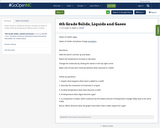
Great Visuals to clarify the abstract concepts of states of matter and how temperature affects states of matter.
- Subject:
- Science
- Material Type:
- Diagram/Illustration
- Simulation
- Date Added:
- 07/13/2020

Great Visuals to clarify the abstract concepts of states of matter and how temperature affects states of matter.
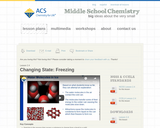
Students will mix ice and salt in a metal can to make it very cold. They will see the liquid water and ice form on the outside of the can. Students will watch an animation of water molecules arranged as ice.
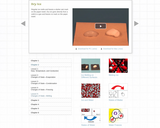
This resource is a video that shows the difference in melting rates between a regular ice cube and a piece of dry ice. The video accompanies the lesson plan, "Changing State: Melting."
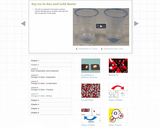
This resource is a video that compares the reaction when dry ice is placed in cold versus hot water. The video accompanies the lesson plan, "Changing State: Melting."
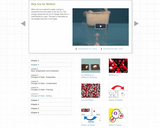
This resource is a video that shows what happens when a piece of dry ice is placed in water. The video accompanies the lesson plan, "Changing State: Melting."
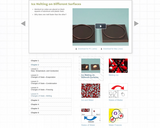
This resource is a video that compares the rate of melting when ice cubes are placed on aluminum and foam surfaces. The video accompanies the lesson plan, "Changing State: Melting."
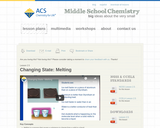
Students will see a small piece of ice melt on an aluminum surface. Students will explain the energy transfer and molecular motion which cause the change in state from a solid to a liquid.
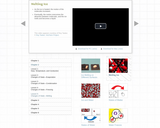
This resource is an animation that accompanies the lesson plan, "Changing State: Melting."
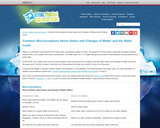
This article lists common misconceptions about states and changes of matter and the water cycle. It provides formative assessment probes and information about teaching for conceptual change.
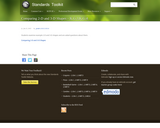
In this assessment students are asked to compare 2-D and 3-D shapes. Students will be given a rectangle and a cube. Students are asked whether the shapes are 2-D or 3-D and whether they are flat or solid. Students will use a Venn Diagram to compare and contrast the attributes of the shapes. An assessment sheet and rubric are provided.
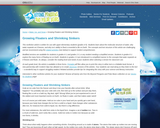
This expository article, written for students in grades 4-5, explains why ice floats and how this is essential to life on earth. Modified versions are available for younger students.
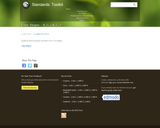
In this assessment students will identify and describe shapes. Teachers will hand out the assessment task and point to figures from left to right. Students will identify the shapes they see in the picture. They will determine whether the shapes are 2-D flat or 3-D solid. Teachers will assess one on one. An I Spy Shape assessment task sheet recording sheet and rubric are provided.

This is lesson one of the unit Weather Trackers (http://www.beaconlearningcenter.com/unitplan/11468.htm). Students learn by observation and hands-on activities the act of water changing state from a solid to a liquid to a gas.
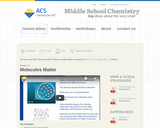
Students will describe their observations of water on the molecular level using the idea that water is composed of tiny molecules that are attached to one another. Students will investigate a drop of water hanging from a dropper and drops of water beading up on wax paper.

In this assessment task students will identify and name a shape. The teacher will set up a Triangle Circle Cube Square Cone Rectangle Sphere and Hexagon going from left to right. Students are asked to name the shape and to tell whether it is a 2-D/flat or 3-D/solid shape.

Great Visuals to clarify the abstract concepts of states of matter and how temperature affects states of matter.

Great Visuals to clarify the abstract concepts of states of matter and how temperature affects states of matter.
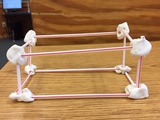
This resource is from Tools4NCTeachers. In this lesson, students explore 3D shapes, such as rectangular prisms and cubes. The students will identify the attributes for each 3D shape and build shapes using sticks, marshmallows, and other materials. Pictures of sample student work and printable recording sheets are provided within this lesson.
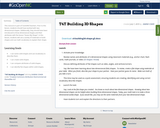
This resource is part of Tools4NCTeachers.
Prior to this lesson, students should have worked with two-dimensional shapes. Additionally, they should have been introduced to three-dimensional shapes and their attributes with the lesson "Guess My Shape".
In this lesson, students will use a variety of materials to build shapes and use math vocabulary to explain their shape.
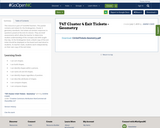
This resource is part of Tools4NCTeachers.
This packet contains exit tickets for the Kindergarten, Cluster 4 geometry standards. Exit tickets are written responses to questions posed at the end of a lesson. They are brief assessments which allow the teacher to determine student understanding of the concepts and skills taught that day. At the Kindergarten level, a blank copy of the exit ticket should be displayed on the board and read aloud to students. As teacher reads, students work independently on their own copy of the exit ticket.